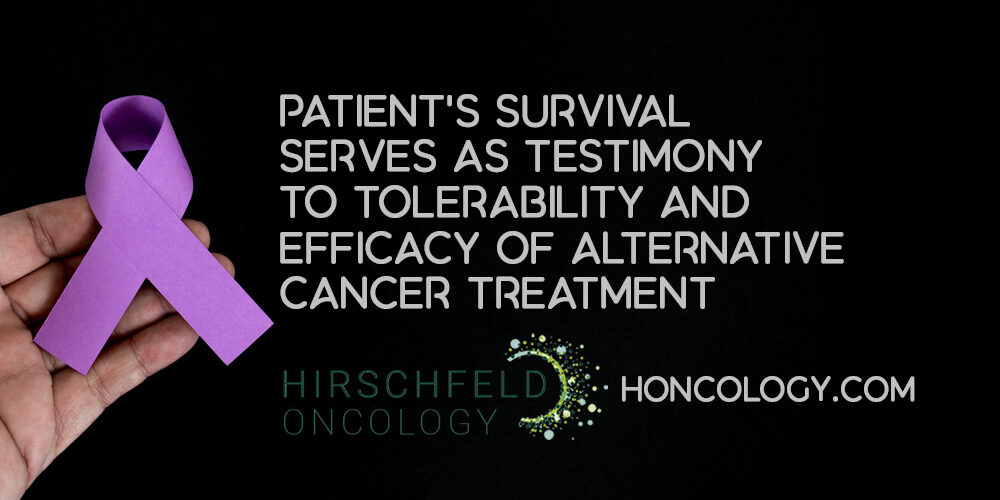The Evolution of Personalized Cancer Treatment
Personalized medicine in oncology involves tailoring cancer treatment based on individual genetic and molecular features of a patient's tumor, as well as personal characteristics such as lifestyle and coexisting conditions.
This approach contrasts with traditional treatments by focusing on the unique biological profile of each patient's cancer, optimizing therapeutic efficacy while aiming to reduce unnecessary toxicity and side effects.
Genomic profiling technologies, especially next-generation sequencing (NGS), play a central role in this evolution. They enable comprehensive analysis of tumor DNA and RNA to identify actionable mutations, gene fusions, and other molecular alterations. Such detailed profiling helps clinicians select targeted therapies and immunotherapies most likely to benefit the patient.
Immunotherapy, including immune checkpoint inhibitors, has further transformed cancer care by harnessing the body's immune system to attack tumor cells selectively. Biomarkers like PD-L1 expression, tumor mutational burden (TMB), and microsatellite instability (MSI) help predict which patients will respond to these treatments.
By integrating genomic insights with immunotherapeutic strategies, personalized cancer treatment improves response rates, prolongs survival, and minimizes adverse effects compared to conventional, one-size-fits-all therapies. Furthermore, noninvasive methods like circulating tumor DNA (ctDNA) analyses allow ongoing monitoring of treatment effectiveness and early detection of resistance.
Thus, personalized medicine represents a paradigm shift in oncology, offering precise, patient-centered care that enhances outcomes and quality of life.
Comprehensive Genomic Profiling: Unlocking Tumor Complexity
What is Comprehensive Genomic Profiling (CGP) and How Does It Work?
Comprehensive Genomic Profiling (CGP) is an advanced testing approach that uses next-generation sequencing (NGS) technologies to analyze hundreds of cancer-related genes simultaneously. This broad, detailed analysis detects multiple genomic alterations, offering a comprehensive molecular landscape of a tumor. Next-generation sequencing (NGS) in cancer enables detection of various mutation types crucial for cancer management.
What Types of Genomic Alterations are Detected by CGP?
CGP detects different categories of genetic changes in tumors, including:
- Single nucleotide variants (SNVs): Single base substitutions in DNA
- Insertions and deletions (indels): Small additions or losses of DNA bases
- Copy number variations (CNVs): Gains or losses of large genomic regions altering gene dosage
- Gene fusions and rearrangements: Abnormal joining of genes creating new oncogenic drivers
These alterations can be pivotal in driving cancer and influence treatment strategies.
How Does CGP Help Identify Actionable Mutations and Tumor Biomarkers?
By revealing the full spectrum of genomic changes, CGP identifies clinically actionable mutations—genetic alterations targetable by specific therapies. It also measures biomarkers such as tumor mutational burden (TMB) and microsatellite instability (MSI), which help predict responses to immunotherapy. This comprehensive data supports personalized treatment plans, potentially improving patient outcomes.
What is the Role of Liquid Biopsy and Circulating Tumor DNA (ctDNA)?
Liquid biopsy and circulating tumor DNA (ctDNA) involve analyzing tumor-derived DNA found in blood plasma, offering a minimally invasive alternative when tissue biopsy is difficult. Although challenges exist, such as low DNA abundance, ctDNA profiling reflects tumor genomic alterations and can monitor disease progression or resistance.
What Challenges Exist in Clinical Implementation and Data Interpretation?
Barriers include tissue sample limitations, high testing costs, complex data interpretation requiring bioinformatics pipelines for variant annotation, and the presence of variants of uncertain significance. Further, standardized guidelines and quality assurance remain evolving areas, posing hurdles for routine use.
How Do Molecular Tumor Boards Support Clinical Decisions?
Molecular tumor boards are multidisciplinary teams that interpret CGP results, integrating genomic data with clinical context to recommend personalized therapies, including targeted treatments and clinical trials. Their involvement improves treatment matching and patient outcomes by navigating the complex genomic information effectively.
Genomic Biomarkers Steering Targeted Therapies and Immunotherapy

Identification of Key Driver Mutations
Genomic biomarkers such as EGFR, KRAS, BRAF, ALK, RET, and NTRK serve as critical drivers in various cancers. For example, EGFR mutations are prevalent in non-small cell lung cancer (NSCLC), while BRAF V600E mutations are common in melanoma. These mutations function as oncogenic drivers, meaning they promote tumor growth and survival. Detecting these driver mutations enables the use of targeted therapies guided by genomic mutations designed to inhibit these specific genetic alterations.
Predicting Response to Targeted Therapy and Immunotherapy
The presence of specific genomic biomarkers directly influences the effectiveness of targeted therapies and immunotherapy. Tumors harboring actionable mutations such as EGFR or ALK rearrangements often respond well to corresponding inhibitors, like osimertinib for EGFR mutations. Similarly, immunotherapy effectiveness is frequently predicted by markers including tumor mutation burden (TMB), microsatellite instability (MSI), and PD-L1 expression.
Tumor Mutation Burden, Microsatellite Instability, and PD-L1 as Predictive Markers
High tumor mutation burden (TMB) correlates with greater neoantigen formation, making tumors more visible to the immune system and thus more responsive to immune checkpoint inhibitors. Microsatellite instability (MSI), often caused by mismatch repair deficiencies, also predicts favorable outcomes to immunotherapy by increasing immunogenic mutations. Additionally, PD-L1 expression on tumor cells serves as a biomarker to identify patients likely to benefit from PD-1/PD-L1 checkpoint blockade therapies.
Clinical Examples
In NSCLC, EGFR, KRAS, and ALK mutations guide targeted therapies, while PD-L1 expression and TMB help select candidates for immunotherapy. Melanoma treatment is informed by BRAF mutation status for targeted kinase inhibitors. Colorectal cancer uses MSI status and KRAS mutations to refine treatment decisions. Breast cancer benefits from biomarker tests predicting response to targeted hormonal therapies and immune infiltration markers for immunotherapy decisions.
Importance of Multi-Omic Data Integration
Combining genomic, transcriptomic, and proteomic data enhances the prediction of therapy response by capturing tumor heterogeneity and immune environment complexity. Multi-omic approaches improve biomarker accuracy and uncover novel targets, augmenting personalized treatment plans that incorporate both targeted therapies and immunotherapeutics for optimal outcomes.
Integrating Genomic Profiling with Immune Checkpoint Inhibitors
What is the mechanism and clinical impact of immune checkpoint inhibitors (ICIs)?
Immune checkpoint inhibitors stimulate the immune system to attack cancer cells by targeting proteins like PD-1, PD-L1, and CTLA-4 that tumors use to evade immune detection. By blocking these checkpoints, ICIs restore T-cell activity against tumors, offering durable responses in cancers such as melanoma and non-small cell lung cancer (NSCLC) Cancer immunotherapy approaches, Immune checkpoint inhibitors (ICIs) mechanisms]. Clinical outcomes include improved survival rates and potential long-term remission [Immunotherapy success in 15 cancer types].
How do genomic biomarkers help select candidates for ICIs?
Genomic biomarkers like tumor mutation burden (TMB), microsatellite instability (MSI), and expression levels of PD-L1 guide treatment decisions by identifying patients more likely to benefit from ICIs Biomarkers predicting immunotherapy response, PD-L1 gene expression and immunotherapy response, Molecular tumor boards and comprehensive genomic profiling, Comprehensive genomic profiling and immunotherapy]. For example, high TMB correlates with numerous neoantigens, enhancing tumor immunogenicity and ICI response Tumor mutation burden as an immunotherapy indicator]. Genomic profiling uncovers specific mutations and alterations that influence treatment efficacy [Comprehensive genomic profiling in oncology].
What are examples of improved survival with combined biomarker-guided immunotherapy?
Studies show that combining genomic markers with immune profiling can enhance patient outcomes. A cohort of advanced cancer patients receiving gene-targeted therapy combined with immune checkpoint inhibitors matched by genomic and immune biomarkers achieved a 53% disease control rate and median overall survival of 9.7 months [Gene-targeted therapy and immune checkpoint inhibitors]. Co-mutations such as KMT2C and TP53 in NSCLC are associated with greater ICI efficacy and longer progression-free survival Integration of comprehensive genomic profiling in NSCLC].
How do genetic alterations like KMT2C/TP53 co-mutations enhance response prediction?
KMT2C mutations are linked to higher TMB and PD-L1 expression, both indicators favoring ICI response Genomic alterations in non-small cell lung cancer, PD-L1 gene expression and immunotherapy response]. When combined with TP53 mutations, these co-alterations robustly predict prolonged benefit from immunotherapy in NSCLC, improving the precision of patient selection beyond single biomarkers Biomarkers for immune checkpoint inhibitor therapy in lung cancer, Genomic profiling in cancer treatment].
What challenges exist regarding resistance and the need for combination strategies?
Resistance mechanisms include tumor immune evasion through loss of antigen presentation and microenvironmental immunosuppression Tumor immune evasion mechanisms, Tumor microenvironment and gut microbiome]. To overcome this, combination approaches integrating ICIs with targeted agents or chemotherapy are under investigation to improve efficacy and manage adverse events [Combination therapies in cancer treatment, Biomarker-based patient selection for combined therapy], highlighting the importance of biomarker-driven personalized immunotherapy Personalized cancer treatment strategies].
Advances in Multi-Modal Profiling for Enhanced Personalized Care

Use of integrated genomic (DNA/RNA), transcriptomic, and epigenomic data
Recent advances in personalized cancer therapy have increasingly relied on combining diverse molecular data types. Integrating DNA and RNA sequencing alongside epigenomic profiling provides a comprehensive picture of tumor biology. This multi-omic approach reveals not only DNA mutations but also gene expression changes and epigenetic modifications that influence tumor behavior and treatment response.
Benefits of RNA sequencing to detect gene fusions and expression biomarkers
RNA sequencing complements DNA analysis by detecting gene fusions and alternative splicing events often missed by DNA-only panels. These gene fusions, such as ALK, ROS1, or NTRK rearrangements, serve as actionable targets for therapy. Additionally, RNA data identify gene expression biomarkers that can refine tumor subtype classification and signal oncogenic pathway activation for optimized treatment selection.
Role of emerging technologies such as AI and machine learning in analyzing complex data
The vast data from multi-omic profiling require advanced computational tools to interpret. Artificial intelligence (AI) and machine learning algorithms are now instrumental in integrating genomic, transcriptomic, and epigenomic information. These technologies improve the accuracy of variant calling, predict treatment responses, discover new biomarkers, and guide precision combination therapies, fostering more effective personalized treatment plans.
Examples of multiparametric profiling improving treatment decisions and clinical outcomes
Studies using comprehensive approaches, including whole exome sequencing and RNA-Seq, have demonstrated actionable alterations in the majority of patients, leading to treatment changes and improved clinical outcomes. For instance, combining immune and genomic profiling predicts immunotherapy benefit in non-small cell lung cancer better than single markers (genomic and immune profiling in NSCLC). Multi-parameter data also guide dual therapy regimens with targeted agents and immune checkpoint inhibitors, improving disease control rates and survival outcomes while managing toxicities effectively.
Combination Therapies: Gene-Targeted Agents with Immunotherapy

Why combine targeted therapies with immune checkpoint inhibitors?
Combining gene-targeted therapy combined with immune checkpoint inhibitors (ICIs) capitalizes on their complementary mechanisms. Targeted therapies disrupt specific oncogenic drivers, potentially altering the tumor microenvironment and gut microbiome to enhance immune recognition. ICIs then stimulate T-cell responses against cancer cells, aiming for synergistic effects to improve tumor control.
What clinical evidence supports improved outcomes?
In a cohort study involving 17 advanced cancer patients treated with combined targeted agents and ICIs matched to individual biomarkers, a disease control rate of 53% was observed. Median progression-free survival reached 6.1 months, and median overall survival was 9.7 months. Notably, three patients experienced prolonged responses exceeding 23 months. These encouraging results were achieved despite prior multiple therapies, highlighting dual therapy potential (source).
How are patients selected using biomarkers?
Molecular tumor boards, liquid biopsy and circulating tumor DNA (ctDNA) and Next-generation sequencing (NGS) for mutation identification enable precise biomarker-driven patient selection. Molecular profiling techniques in oncology identify genomic aberrations such as ERBB2 amplification or PTCH1 mutations, alongside immune markers including tumor mutational burden (TMB), microsatellite instability (MSI), and PD-L1 expression. Tailoring treatment based on these markers improves the likelihood of clinical benefit from combination therapy.
How is toxicity managed during combination treatment?
In the dual therapy regimens studied, targeted agents were administered at a median dose reduction to 50% of the FDA-approved amount, while ICIs were given at full dose. This dose adjustment helps mitigate toxicity. Serious adverse events related to treatment occurred in 24% of patients but were manageable and non-fatal, demonstrating feasibility of this approach (reference study.
What are current challenges and future opportunities?
Despite promising outcomes, biomarker-guided combinations remain underutilized, with only about 1.3% of clinical trials employing biomarker-based selection for both therapy types. Ongoing research is needed to expand biomarker panels, optimize dosing strategies, and better understand resistance mechanisms. Enhanced integration of molecular profiling into clinical practice offers opportunities to improve personalization and efficacy of combination cancer therapies.
Ethical, Access, and Implementation Challenges in Personalized Oncology

What are the barriers including cost, limited access to genomic testing, and healthcare disparities?
Despite the transformational potential of personalized oncology, several significant barriers hinder its widespread implementation. High costs of genomic testing and targeted therapies restrict availability, especially in under-resourced healthcare settings. Limited access to testing technologies is pronounced in rural and economically disadvantaged populations, exacerbating disparities in cancer outcomes. Inequities also stem from variations in healthcare infrastructure and insurance coverage, resulting in inconsistent availability of personalized medicine across regions.
How does complexity in interpreting genomic and immune biomarker data affect treatment?
Understanding and integrating complex genomic profiling and immune biomarker data require advanced expertise. The interpretation of comprehensive genomic profiling (CGP) and immune biomarker assays involves analyzing numerous variants, somatic and germline mutations, and multi-omic data sets. This complexity can pose challenges for clinicians, potentially delaying treatment decisions or leading to misinterpretation of actionable targets (clinical decision-making with genomic data).
What ethical concerns arise regarding incidental germline findings and data privacy?
Genomic profiling may reveal incidental germline mutations unrelated to the primary cancer but significant for hereditary risk, raising ethical issues about disclosure, patient consent, and family implications. Furthermore, genomic data privacy is an ongoing concern, as genetic information is sensitive and could contribute to discrimination if mishandled. Transparent policies and robust data protection measures are essential to safeguard patient rights (ethical considerations in genomic medicine).
How do these challenges impact treatment equity and the need for patient education and counseling?
Barriers in access and understanding create inequities in who benefits from personalized oncology. Effective patient education and genetic counseling are critical to ensure informed decision-making and psychological support, particularly when dealing with complex genomic findings or high-risk hereditary information. Without comprehensive communication, disparities in treatment uptake and outcomes may persist (personalizing care for patients of all backgrounds).
What efforts are underway to standardize testing and promote multidisciplinary collaboration?
To address these challenges, multidisciplinary molecular tumor boards have been established to assist in interpreting complex data and recommending personalized therapies. Ongoing efforts to standardize testing protocols, improve accessibility, and develop consistent terminology aim to reduce variability and improve integration of personalized medicine into routine care. Policy initiatives promoting reimbursement and access, alongside education for healthcare providers and patients, are pivotal in advancing equitable personalized oncology (usefulness of comprehensive genomic profiling).
The Future Landscape: Innovations Shaping Genomic and Immuno-Oncology

What are the emerging technologies driving personalized cancer therapies?
Emerging technologies are revolutionizing personalized medicine in oncology. CRISPR gene editing enables precise genomic modifications, offering potential for correcting mutations that drive malignancies. Advanced personalized nanovaccines and immunomodulators based on tumor antigens are being developed to enhance immune activation with higher specificity and fewer side effects. Meanwhile, artificial intelligence (AI) and machine learning models are improving predictive analytics for treatment responses by integrating complex genomic data, guiding personalized treatment decisions.
How are personalized immunotherapies evolving?
Personalized immunotherapies, including CAR T-cell therapies and custom cancer vaccines, represent groundbreaking advances. CAR T-cells involve modifying a patient’s own T cells to target specific tumor antigens, offering tailored treatment especially effective in hematologic cancers. Personalized cancer vaccines utilize patient-specific neoantigens to stimulate immune responses tailored to their unique tumor profile, improving immunogenicity and clinical efficacy (Cancer immunotherapy advances).
What role does the microbiome and tumor microenvironment play in personalization?
The tumor microenvironment and gut microbiome are increasingly recognized as critical factors influencing immunotherapy efficacy (Personalized medicine in oncology). Microbiome composition affects response rates to immune checkpoint inhibitors, with certain bacterial species linked to improved outcomes. Integrating microbiome and tumor microenvironment analysis assists in patient stratification and identifies novel therapeutic targets, enhancing precision treatment strategies (Cancer immunotherapy and the immune system).
How are clinical trials adapting to support personalized treatments?
Prospective clinical trial designs now incorporate multi-omics profiling—integrating genomics, transcriptomics, epigenomics, and proteomics—with patient stratification by molecular and immune biomarkers (Comprehensive genomic profiling (CGP)). This comprehensive approach enables better matching of patients to therapeutic regimens, early assessment of treatment efficacy, and refinement of patient-specific intervention strategies.
What benefits can these innovations bring to patient care?
These cutting-edge innovations hold promise to improve early intervention, minimize adverse effects by tailoring treatments to patient biology, and enhance overall outcomes (Precision medicine in cancer care). Personalized therapies can limit exposure to ineffective treatments, reduce toxicities, and support longer survival and improved quality of life for cancer patients (Usefulness of Comprehensive Genomic Profiling in Clinical Care.
Patient-Centered Approaches in Personalized Cancer Care
Why is considering patient diversity important in personalized cancer care?
Understanding patient diversity—including genetic background, lifestyle, culture, and socioeconomic status—is crucial to tailoring cancer care. Genetic differences affect how tumors develop and respond to treatment, while lifestyle factors such as diet and exercise can influence therapy outcomes. Socio-cultural aspects impact care access and patient preferences. For example, disparities exist in cancer mortality rates among racial groups and between rural and urban populations, emphasizing the need for personalized approaches that consider these variables to improve equity and effectiveness (Personalizing cancer care.
How does personalized treatment planning focus on quality of life and side effects?
Personalized cancer care aims to optimize tumor response while minimizing adverse effects. Treatments are selected based on tumor genomics, immune environment, and patient health to preserve organ function and wellbeing. Pharmacogenomic testing guides drug choice and dosing to reduce toxicity and improve pain management. For instance, genetic variants affecting opioid metabolism help customize analgesic regimens, enhancing both effectiveness and safety (Pharmacogenomics in cancer pain management.
What role does pharmacogenomics play in optimizing therapies?
Pharmacogenomics evaluates inherited genetic variants influencing drug responses and side effects. Incorporating such testing allows clinicians to predict a patient's reaction to chemotherapy or supportive medications, adjusting doses accordingly. This personalized approach can prevent severe side effects and improve treatment adherence and outcomes (Pharmacogenomic testing for drug response.
How are education and advocacy important for patients?
Educating patients about genomic profiling and immunotherapy options empowers them to participate actively in treatment decisions. Resources like easy-to-read publications, podcasts, and workshops help patients understand complex concepts such as biomarkers, targeted therapies, immune checkpoint inhibitors (ICIs) mechanisms, and immunotherapy side effects. Advocacy initiatives work to overcome bias and healthcare disparities by promoting culturally sensitive communication and equitable care (Cancer Treatment Education Resources).
How does multidisciplinary collaboration enhance personalized cancer care?
Comprehensive patient-centered care involves the coordinated effort of oncologists, genetic counselors, pharmacists, social workers, and other specialists. Multidisciplinary molecular tumor boards interpret genomic data and recommend tailored treatments, while supportive care teams address socio-cultural and psychological needs. This holistic approach improves both clinical outcomes and patient satisfaction by addressing the full spectrum of individual differences (Clinical Implementation of Integrated Genomic Profiling.
Embracing Personalized Oncology Through Integrated Genomic and Immunotherapeutic Strategies
Integration of Genomic Profiling and Immunotherapy Enhances Personalized Cancer Care
Comprehensive genomic profiling (CGP) identifies tumor-specific mutations and biomarkers like tumor mutational burden (TMB) and PD-L1 expression that predict immunotherapy efficacy. Combined with immune checkpoint inhibitors, this integration has revolutionized treatment strategies.
Transformative Impact on Patient Outcomes and Quality of Life
Patients receiving personalized treatments based on genomic and immune profiling report better response rates, longer progression-free survival, and improved overall survival. Tailored approaches minimize side effects and enhance quality of life compared to conventional therapies.
Challenges and the Path Forward
Despite advances, barriers including access disparities, high costs, and complex data interpretation remain. Advancing multidisciplinary tumor boards, ongoing research, and equitable healthcare policies are critical to expand personalized oncology's benefits globally, ensuring tailored treatment reaches all patients effectively.





.png)


.png)
.png)




